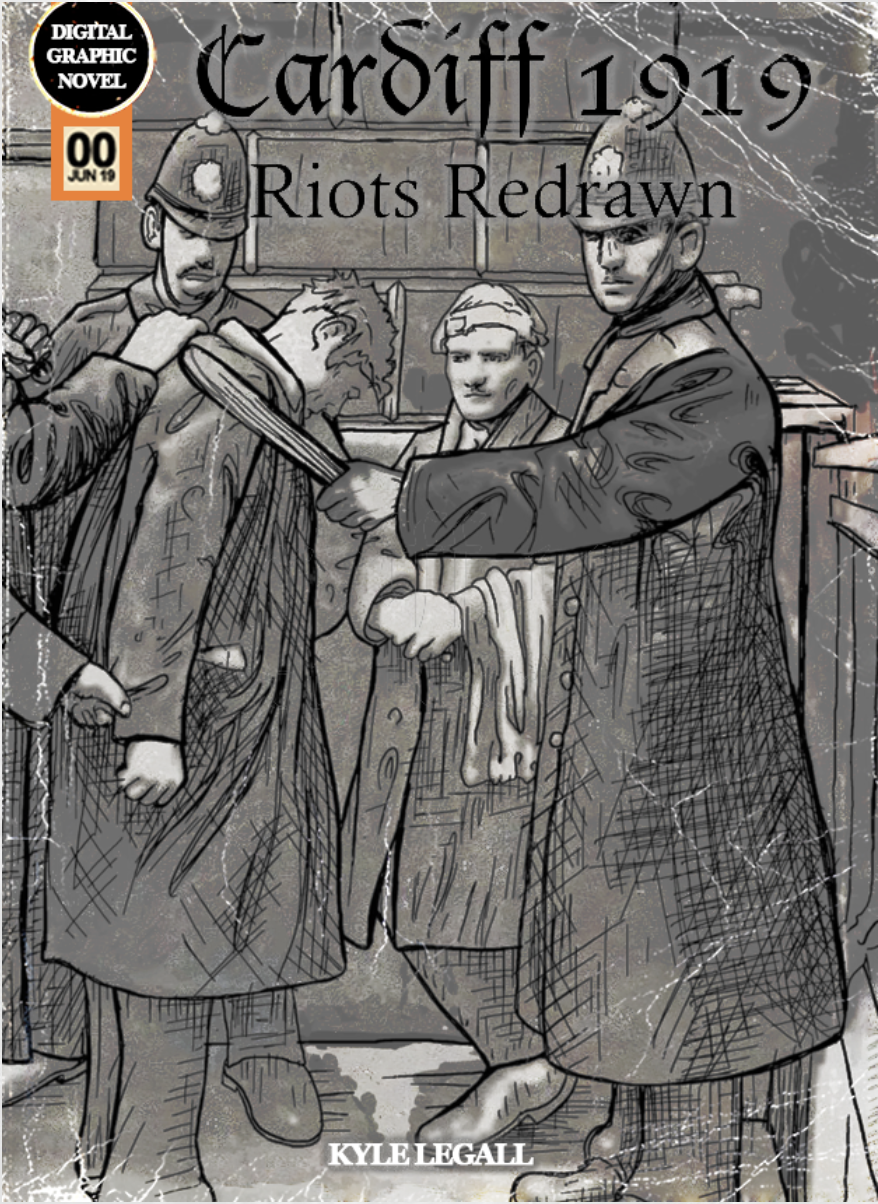Seminar Blogs
“Retelling of History through Performance” – Elena Roznovan
 Through images and dramaturgy of text, Mike Pearson transports the audience’s imagination to the events of the Cardiff Race Riots of 1919. He describes in detail what transpired on the consecutive days of the riot, between June 11 and June 14, 1919. In Pearson’s historical reconstruction based on a local historian’s account and numerous newspaper article accounts, detail becomes the main protagonist that weaves a multilayered, complex, and vivid dramaturgy of the many voices of Cardiff’s cultural memory.
Through images and dramaturgy of text, Mike Pearson transports the audience’s imagination to the events of the Cardiff Race Riots of 1919. He describes in detail what transpired on the consecutive days of the riot, between June 11 and June 14, 1919. In Pearson’s historical reconstruction based on a local historian’s account and numerous newspaper article accounts, detail becomes the main protagonist that weaves a multilayered, complex, and vivid dramaturgy of the many voices of Cardiff’s cultural memory.
What interested me most was the different forms of artistic outputs that arose as a result of the research Pearson did in conjunction with the National Theater Wales about the Cardiff Race Riots. From Things Come Apart, in 2018, a live performance[1] supplemented by installation of tables with maps and pins to retrace the choreography of the mobs and bring back the topography of the city of that time; to Wild Scenes at Cardiff, in 2019, a simplified version of the performance supported by images of the text gleaned from the research project; to Cardiff 1919: Riots Redrawn, in 2020, an online-based interactive digital graphic novel that utilizes videos, maps, and drawings.
In all the forms afro mentioned, Pearson presents the research through the articulation of the material in a performative way without providing any conclusions to the stories told. In other words, Pearson leaves the modalities of the storytelling to be the art form that inspires the audience to come to their own conclusions. He puts emphasis on the theatrical reconstruction of the events of the Cardiff Race Riots which in turn performatively evoke a sense of place and time. Because of the lack of historical accounts of the Cardiff Race Riots, Pearson’s theatrical reconstructions are in a way of performances about an absence that brings to light a past which almost slipped into obscurity. A past that is the constitutes in part the foundation of the current Cardiff racial predispositions and experiences. Furthermore, these reconstructions of the events of a hundred years ago serve as cultural memory[2] markers for the current Somali and Yemeni communities of Cardiff whose stories are often overlooked in history books. Interestingly, beyond being an artistic performance Pearson’s work also traverses into being an account of history that otherwise occupied the consciousness of many as merely a city legend.
[1] Here I would like to invoke one of Jon McKenzie’s implied definition of performance as used in the humanities and social sciences “beginning to use a theatrical concept of performance to understand social rituals and everyday interactions” (2001, 3)
[2] “Cultural memory is the constructed understanding of the past that is passed from one generation to the next through text, oral traditions, monuments, rites, and other symbols.” National Geographic Society, s.v. “Cultural Memory”
References
- National Geographic Society. 2020.“Cultural Memory.” Last modified September, 4, 2020. https://www.nationalgeographic.org/encyclopedia/cultural-memory/#:~:text=Cultural%20memory%20is%20a%20form,into%20where%20we%20came%20from.
- McKenzie, Jon. 2001. “Introduction” In Perform or Else: From Discipline to Performance, Taylor & Francis Group, 3-26. London: Routledge.
*Image credits: screenshot taken from the artwork Cardiff 1919: Riots Redrawn (https://www.cardiff1919.wales/)

